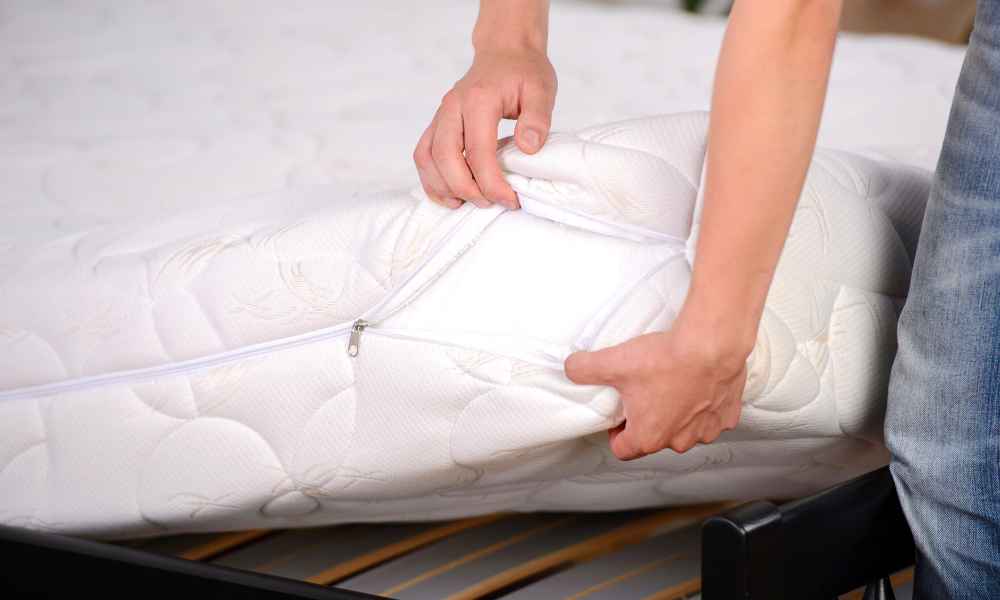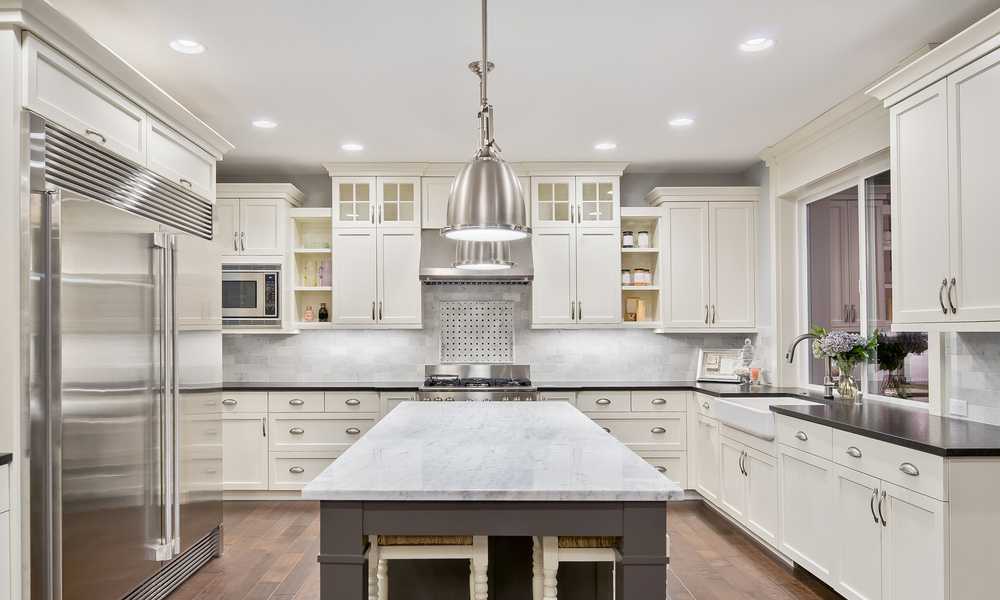Mold can be a serious problem in any kitchen, and understanding the causes of mold in kitchen cabinets can help homeowners take preventative steps to protect their homes. The appearance of mold in kitchen cabinets can not only look unsightly, But it can also lead to serious health issues. It is important to take the time to understand what causes mold growth in kitchen cabinets so that it can be addressed as quickly and efficiently as possible. We will discuss what causes mold growth in cabinets, How to identify it, and some tips on preventing it from happening in the first place. We will also discuss some of the health risks associated with mold growth.
What is mold and what does it look like?

Mold is a type of fungus that can grow on various surfaces, including food, clothing, walls, and floors. It is often identified by its fuzzy or slimy appearance and can range in color from white to green to black. Mold typically appears in damp places with poor ventilation. It can cause health problems such as allergies and asthma if left untreated.
Mold reproduces through tiny spores that are released into the air. These spores thrive in moist environments and can spread quickly throughout a home or building if not addressed quickly. Signs of mold include musty odors, discoloration on walls or other surfaces, and the presence of visible mold growths.
If you suspect your home may have a mold problem, it’s important to contact an experienced professional for assistance in identifying and removing the molds safely. A professional will be able to assess the extent of the problem and determine the best course of action for removal and prevention.
What Causes Mold in Kitchen Cabinets and What are the Signs of its Presence?
Mold can form in kitchen cabinets due to high levels of moisture in the air or from water damage. The warm, humid environment inside a cabinet is the perfect place for molds to grow. Signs of mold in cabinets include discoloration on the walls and surfaces, musty odors, and visible growths. If you notice any of these signs, it’s important to address the problem quickly. To prevent molds from forming in your kitchen cabinet, make sure to keep them dry by using an exhaust fan when cooking and keeping lids on containers with food or liquids. Additionally, make sure your home has adequate ventilation so that moisture doesn’t build up over time. Regularly inspecting your cabinets for signs of molds are also a good idea so that you can catch any problems early and take action quickly if needed.
How can I get rid of mold in my kitchen?

Removing molds from your kitchen can be a difficult and time-consuming task, but it is important to do so in order to keep your family safe and healthy. The first step is to identify where the mold is coming from. If the source of the moisture that caused the mold is not fixed, then the molds will likely return. Common sources include leaky pipes or roofs, inadequate ventilation, and condensation on windows or walls.
Once you have identified the source of the moisture, you can begin to clean up the mold. Start by cleaning any affected surfaces with soap and water and scrubbing away any visible mold growth. You may also want to use a solution of one part bleach to ten parts water as this can help kill off any remaining spores. Make sure to wear protective gloves when handling bleach and always ventilate the area well while cleaning.
What causes mold in the kitchen?

Mold in the kitchen is caused by moisture, warmth, and food. Moisture is necessary for mold growth, and kitchens are often prone to high humidity due to cooking activities. Warmth also facilitates mold growth; kitchens are generally warm due to the presence of appliances like ovens and dishwashers. Finally, food is a source of nutrition for mold, which can grow on surfaces like countertops if left uncleaned. To prevent mold in cabinets, it’s important to keep it dry and clean up any spills or crumbs as soon as possible. Additionally, make sure that there is adequate ventilation so that moist air doesn’t become trapped in the room.
What are the signs molds in the kitchen?
Molds in the kitchen can be identified by several signs. One of the most common signs is a musty or earthy smell. This odor is often caused by the presence of mold spores, which are released into the air when mold colonies grow. Additionally, you may also observe discoloration on walls, ceilings, and other surfaces in your kitchen. Mold growth typically appears as greenish-black spots or patches that spread over time. Finally, if you notice condensation or dampness in certain areas of your kitchen, this could be an indication of mold growth as well.
17 Causes Mold In Kitchen Cabinets
Mold growth in kitchen cabinets can be a frustrating problem for homeowners. Not only is it unsightly, but it can also lead to health issues and damage to your property. There are 17 causes of mold growth in cabinets that you should be aware of.
1. Keep an eye on humidity levels

High humidity levels can cause mold growth, which is not only unsightly but also poses health risks. Mold can cause respiratory problems and allergies and may even trigger asthma attacks.
Humidity fluctuates based on various factors such as weather conditions, ventilation, and moisture sources in your home. When the air inside your home is humid, it creates a perfect breeding ground for mold spores that settle on surfaces like kitchen cabinets. Moisture from cooking or washing dishes further adds to the humidity levels in your kitchen.
To prevent mold growth in your cabinets, monitor the humidity levels regularly using a hygrometer. The ideal relative humidity level should be between 30-50%.
2. Poor Ventilation
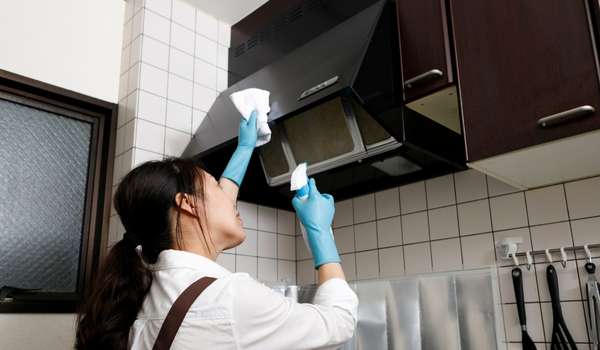
Poor ventilation can often be the causes of mold growth in kitchen cabinet. Mold thrives in damp and humid environments, making a poorly ventilated kitchen an ideal breeding ground. When moisture builds up inside cabinets, it creates the perfect conditions for mold to grow and spread.
One potential cause of poor ventilation is a lack of air circulation. When there’s no way for fresh air to flow into the room, moisture accumulates and condenses on surfaces like cabinet walls and shelves. Another cause could be inadequate ventilation systems in the home or building, which prevent proper airflow and contribute to high humidity levels.
To prevent mold growth caused by poor ventilation, it’s important to take proactive steps such as installing vents or fans that can circulate air throughout the space. Additionally, homeowners can regularly check cabinets for signs of dampness or musty odors and promptly address any issues they find.
3. Leaky Pipes & Drains

Leaky pipes and drains are common problems that homeowners face. Not only do they causes inconvenience, but they can also lead to mold growth in kitchen cabinets. Mold is a type of fungus that thrives in damp environments, making your cabinets the perfect breeding ground for it. If left unchecked, mold can cause health problems and damage to your property.
One of the main causes of leaky pipes and drains is wear and tear over time. With constant use, pipes and drains can become corroded or damaged, leading to leaks. Another common cause is improper installation or poor workmanship during construction or renovation projects. In addition, clogs caused by food particles, grease buildup, or foreign objects can put extra pressure on pipes and joints causing them to crack or burst.
4. Cleaning Products

Many cleaning products contain water as a base ingredient, which can create a moist environment inside your cabinets. Additionally, some cleaning products may leave behind residue that can attract moisture and promote mold growth. To prevent mold from forming in your cabinets, it’s important to choose cleaning products that are specifically designed for use on wood or other materials commonly found in the kitchen.
Another way to prevent mould from forming is to ensure that your cabinets are properly ventilated. If you have a small or poorly ventilated kitchen, consider installing an exhaust fan or opening windows when cooking or using cleaning products.
5. Lack of Maintenance

Lack of maintenance is one of the most common reasons that mold starts to grow in kitchen cabinets. When homeowners neglect to clean their cabinets regularly, food particles and moisture can accumulate, creating a breeding ground for mold. If left unchecked, this mould can spread quickly throughout your kitchen, causing damage to your cabinets and potentially impacting your health.
One of the primary causes of mold growth in kitchen cabinets is a lack of ventilation. Without proper airflow, moisture can become trapped inside the cabinet space, leading to condensation and eventually mould growth. This issue is particularly prevalent in older homes or those with poorly designed kitchens that don’t allow for air circulation between the walls and cabinetry.
Another potential cause of mold growth in cabinets is water damage. If you’ve experienced any type of water leak or flooding near your cabinets, it’s critical that you dry out the affected area thoroughly and immediately.
6. Wash dishes daily

Washing dishes daily is a chore that most of us dread, but the benefits of doing so are numerous. Not only does it help maintain cleanliness in the kitchen, but it also ensures that there is no buildup of dirt and grime that can attract pests. However, not washing your dishes regularly can lead to an even bigger problem mould growth in your kitchen cabinets.
Mold thrives on moisture and warmth, which are both present in dirty dishes left for extended periods. When food particles and grease accumulate on dishes over time, they provide a perfect breeding ground for mould spores to grow. As these spores spread through the air, they can quickly settle on any surface nearby including your kitchen cabinets.
Once mold has taken hold in your cabinets, it can be difficult to remove and may even cause health problems if left unchecked.
7. Clean the cabinets and food storage areas

Clean the cabinets and food storage areas to avoid mold in your cabinets. As a homeowner, you may not realize that mould can grow on almost any surface, including kitchen cabinets. Mold spores thrive in warm and humid environments, making them a common problem in kitchens. If left unaddressed, mould can cause health issues such as respiratory problems, allergies or even damage to your home.
The causes of mold growth in cabinets are varied. One of the most common causes is moisture from spills or leaks in pipes located behind the cabinet walls. Food crumbs and debris also provide an ideal breeding ground for mould spores to grow and multiply quickly. Moreover, if you live in an area with high humidity levels or lack proper ventilation, you’re at risk of developing mould growth in your kitchen cabinets.
8. Environmental Factors
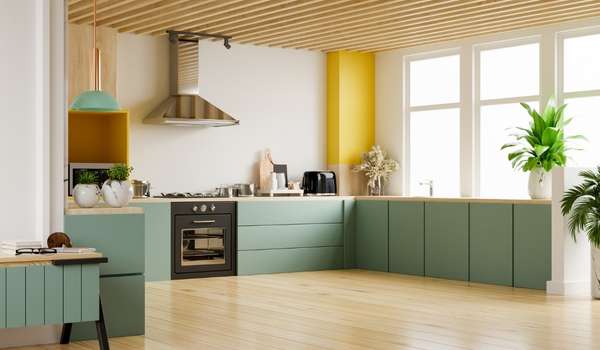
Environmental factors play a significant role in the growth and spread of mold in kitchen cabinets. One of the most common environmental factors that cause mould is humidity. Humidity levels above 60% promote the growth of mold, making kitchens, especially those with poor ventilation, susceptible to mold infestation.
Another environmental factor that can causes mold in kitchen cabinets is poor insulation. Poor insulation leads to condensation on walls and ceilings, which creates an environment conducive to mould growth. In addition, leaks from pipes or appliances such as dishwashers can create moisture build-up that promotes the growth of mold.
Moreover, inadequate cleaning practices also contribute to the development of molds in kitchen cabinets. Failure to clean spills or food residues promptly encourages moisture retention and attracts microbes that thrive well in damp environments.
9. Improper Ventilation

Improper ventilation is one of the leading causes of mold growth in kitchen cabinets. When excess moisture accumulates inside your cabinets, it can create an ideal environment for mould and mildew to thrive. This can cause damage to your cabinets as well as pose a health risk to you and your family.
One common cause of improper ventilation is the lack of air circulation in the kitchen. If you have sealed windows or doors, or if you don’t use exhaust fans when cooking, steam and moisture will build up inside your kitchen. This creates a breeding ground for mould spores that may eventually make their way into your cabinets.
Another factor that contributes to improper ventilation is poor insulation or sealing around pipes and vents. If these areas are not properly insulated, they can create condensation which leads to moisture buildup and ultimately, mold growth in kitchen cabinets.
10. Poor Cleaning Practices

Poor cleaning practices can lead to mould growth in kitchen cabinets, which can be both unsightly and unhealthy. Mold spores thrive in warm, moist environments, making kitchens an ideal location for their growth. When left unchecked, mould can spread quickly and cause significant damage to your cabinets.
One of the main causes of mold growth in kitchen cabinets is improper ventilation. If your cabinets are located near a stove or oven, it’s important to ensure that they have proper airflow to prevent moisture buildup. Additionally, leaving wet dish towels or sponges inside closed cabinets can create a breeding ground for mould spores.
Another factor that contributes to poor cleaning practices is neglecting to thoroughly clean your cabinets on a regular basis. Wiping down surfaces with a damp cloth may remove visible dirt and grime but doesn’t eliminate bacteria or fungi that may be lurking beneath the surface.
11. Leaky Plumbing

Leaky plumbing is a common problem that many homeowners face. It can cause a lot of damage to your home, including mould growth in your cabinets. There are several reasons why your plumbing may be leaking, and it’s important to identify the cause as soon as possible to prevent further damage.
One of the most common causes of leaky plumbing is old or worn-out pipes. Over time, pipes can become corroded or damaged, which can lead to leaks. Another potential culprit is high water pressure, which can put too much strain on your pipes and cause them to burst or develop cracks. In some cases, leaks may also be caused by improper installation or faulty hardware.
If you suspect that you have leaky plumbing in your home, it’s important to take action right away. Ignoring the problem can lead to costly repairs down the line and even pose health risks from mould growth.
12. Condensation Buildup

Condensation buildup can be a frustrating problem for homeowners. It occurs when warm and moist air comes into contact with cold surfaces, causing water droplets to form. This buildup can lead to a number of issues, including mould in kitchen cabinets.
There are several factors that contribute to condensation buildup. Poor ventilation is one of the main causes, as it allows moisture to linger in the air. Inadequate insulation can also lead to this problem, as it allows cold air to seep through walls and windows. Additionally, activities such as cooking and showering produce steam that contributes to condensation buildup.
Condensation buildup can cause serious damage over time. The presence of excess moisture creates an ideal environment for mould growth, which can spread rapidly throughout your home if not addressed promptly.
13. Stagnant Air

Stagnant air is a serious problem in homes across the country. It is often caused by poor ventilation, which can lead to mould growth and other health hazards. One of the areas that are especially susceptible to stagnant air is kitchen cabinets.
When the air becomes stagnant, it means that it is not circulating properly. This can be due to a variety of factors, including closed windows and doors or blocked vents. When this happens, moisture can accumulate in places like kitchen cabinets where there is little airflow. This moisture provides an ideal environment for mould growth.
Kitchen cabinets are particularly vulnerable because they are often located near sources of heat and moisture such as stovetops and dishwashers. Mold growth in cabinets can cause unpleasant odors and may also release spores into the air which can aggravate allergies or respiratory conditions.
14. Clean your kitchen regularly

Keeping your kitchen clean is essential for maintaining a healthy home. Unfortunately, many homeowners overlook the importance of cleaning their kitchen regularly, which can lead to a host of problems, including mould growth in cabinets. Mold thrives in damp and humid environments, making kitchens with poor ventilation or leaks more susceptible to mould growth.
Mold spores can quickly spread throughout your home, causing health problems such as allergies and respiratory issues. If you notice musty odors or black spots on your kitchen cabinets, it’s important to take action immediately. To prevent mould from growing in your kitchen cabinets, be sure to wipe down surfaces regularly with a disinfectant cleaner.
It’s also crucial to maintain proper ventilation in your kitchen by opening windows or using exhaust fans when cooking or washing dishes. Keeping an eye out for leaks and fixing them promptly can also help prevent mold growth.
15. The bottom line

The bottom line is clear: Mold in kitchen cabinets can be a serious problem that requires immediate attention. There are several factors that can cause mould growth in your cabinets, including leaky pipes, high humidity levels, and poor ventilation. Ignoring these issues can lead to health problems and costly repairs down the line.
One of the primary causes of mold growth in kitchen cabinets is moisture buildup. This can happen when there are leaks from pipes or appliances, or when there isn’t enough ventilation to allow for proper airflow. When left unchecked, this moisture will create an ideal breeding ground for mold spores to thrive and spread throughout your home.
16. Clean appliances after use
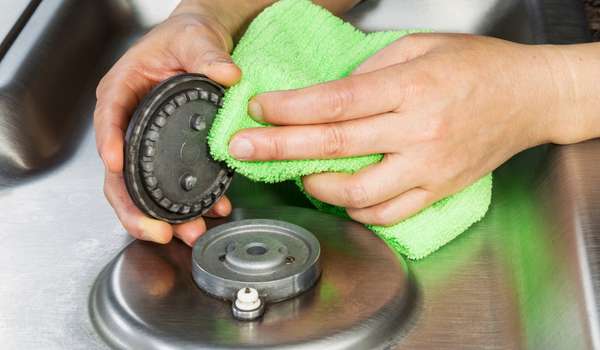
Mold thrives on moisture, and dirty appliances can create the perfect environment for it to grow. This can lead to unpleasant odors and even potential health hazards.
One of the most common causes of mould growth in kitchen cabinets is food residue left on appliances. When appliances aren’t properly cleaned after use, food particles can accumulate and provide a breeding ground for mould spores. Additionally, spills and leaks from appliances can also contribute to moisture buildup and mould growth.
To prevent mold from taking over your kitchen cabinets, it’s important to make sure that all appliances are thoroughly cleaned after each use. Wipe down surfaces with a damp cloth or sponge, paying special attention to areas that tend to collect dirt or grime.
16. Throw away spoiled food

Throw away spoiled food. It’s that simple. Mold under kitchen cabinets is caused by food that has gone bad and has been left to rot for too long. Whether it’s a forgotten meal in the back of the fridge or leftovers that have been sitting out on the counter, food spoilage can quickly lead to mold growth.
Not only is mould unsightly and unpleasant to look at, but it can also pose health risks, especially for those with allergies or respiratory issues. In addition, mould can spread quickly and easily, contaminating other foods and surfaces in your kitchen.
To prevent mould growth in your kitchen cabinets, make sure you regularly clean out your fridge and pantry of any expired or spoiled items. Don’t let leftovers sit out on the counter for too long – store them properly in airtight containers in the fridge as soon as possible.
17. Fridge and food storage-related molds

Mold is a common problem for many homeowners, especially in the kitchen. One of the most susceptible areas to mould growth is your fridge and food storage cabinets. There are several causes of mold in kitchen cabinets, including moisture buildup from condensation, leaky pipes, and improper ventilation.
If you notice any musty smells or discoloration on your cabinets or appliances, it’s essential to take action immediately. Mold can cause health problems such as respiratory issues and allergies. To prevent mould from growing, always wipe down the inside of your fridge regularly and ensure there are no spills or leaks.
Proper ventilation is also crucial to preventing mould growth in your kitchen cabinets. Make sure that air can circulate freely around your appliances and that they’re not pushed too close together.
How can you identify mold in a kitchen cabinet?
Mold can be identified in a kitchen cabinet by its appearance and smell. It usually appears as dark spots or patches on walls, ceilings, or cabinets and can be accompanied by a musty odor. If you suspect there may be mould present, it’s important to take action quickly to prevent further growth. You can conduct an inspection of the area and test for mould using a black light or swab kit. If you find evidence of mold, it is important to call a professional to assess the situation and safely remove the mold from kitchen cabinets.
How to Clean Mold From Kitchen Cabinets?
Cleaning mould from kitchen cabinets is a relatively simple process.
Here are 5 steps
Step 1: Preparation

Make sure you have all the necessary materials. This includes gloves, a mask, a cleaning solution (such as vinegar or bleach), a scrub brush or sponge, and a bucket of warm water. Remove all items from your cabinets and place them in another room. This will give you plenty of space to work without any obstructions.
Before beginning the cleaning process, it’s important to identify the type of material your cabinets are made of. Different materials require different cleaning methods and solutions. For example, if you have wooden cabinets with mould on them, using bleach could damage their finish.
Step 2: Remove Cabinet Contents

Removing the contents of your kitchen cabinets can be a daunting task, but it’s essential if you want to get rid of mold. Start by emptying out one cabinet at a time, taking everything out and setting it aside. As you go through each cabinet, check for signs of mould on the shelves and walls.
Once you have removed all the contents from your kitchen cabinets, it’s time to clean them thoroughly. Use a mixture of water and vinegar or bleach to wipe down the interior surfaces of each cabinet.
Step 3: Clean Cabinet Surfaces
cleaning mould from cabinet surfaces is a straightforward process that doesn’t require much effort.
Start by wiping down the affected area with a dry cloth or paper towel to remove any loose debris or dust. Then, mix equal parts water and white vinegar in a spray bottle and spray the solution onto the moldy areas. Let it sit for about 10 minutes before scrubbing the surface with a non-abrasive brush or sponge.
For stubborn stains that refuse to budge, try mixing baking soda with water to form a paste and apply it directly onto the affected area. Leave it on for 5-10 minutes before scrubbing gently with your sponge or brush.
Step 4: Dry Cabinet Interior
Keeping the interior of your dry cabinet clean is critical to maintaining the freshness and quality of your food. Mold and bacteria can grow rapidly in a damp environment, causing your stored goods to spoil or become contaminated. To prevent this from happening, it’s essential to regularly clean and disinfect the interior of your dry cabinet.
Cleaning your dry cabinet’s interior is to remove all items from the inside. This will allow you to thoroughly wipe down every surface with a disinfectant cleaner. Pay extra attention to any areas that come into direct contacts with food, such as shelves and drawers.
Once you’ve cleaned everything down, make sure the inside of the cabinet is completely dry before restocking it with fresh food items. Regular cleaning should be done on a weekly basis, while deeper cleaning should be performed bi-annually or as needed if mould or other contaminants are present.
Step 5: Disinfect Cabinets
Disinfecting your kitchen cabinets is crucial to maintaining a clean and healthy home, especially when it comes to dealing with mold. Mold can easily grow on damp surfaces like wooden cabinets, so it’s important to stay on top of cleaning and disinfecting them regularly.
Remove all items from the affected cabinets and wipe down the surfaces with a damp cloth to remove any visible mould or mildew. Then mix equal parts water and vinegar in a spray bottle and generously apply the solution to the inside of the cabinet. Leave it on for at least 15 minutes before wiping it away with a clean cloth.
For tougher cases of mold, consider using a specialized cleaner that contains bleach or hydrogen peroxide. These cleaners are highly effective at removing stubborn stains and killing any remaining mould spores that may be lurking in your cabinets.
What are the health problems caused by mold?
Mold can cause serious health problems. Inhaling or touching mould spores can lead to respiratory issues such as coughing, wheezing, and difficulty breathing. It can also cause skin irritation, allergic reactions, and asthma attacks. In some cases, it can even lead to more serious illnesses like lung infections. People with weakened immune systems are particularly vulnerable to the health risks posed by mould exposure.
The Final Thought
Mold is a common problem in kitchen cabinets and can be caused by a variety of factors. It is important to identify the source of the issue and take action to prevent future growth. Regular cleaning, adequate ventilation, and avoiding excess moisture are all important steps you can take to help keep your kitchen cabinets safe from mold. Additionally, it’s essential that any water damage or leaks in your home are addressed promptly as this can create favorable conditions for mold growth.


